Lost luggage. Damaged goods. Waiting at the carousel like lemmings to reclaim your bag. Checking a suitcase when you fly adds extra hassles and fees to your trip. In short: it’s not worth it.
For the last 15 years as a travel writer and editor, I’ve flown on average once per month and, in that time, I’ve only checked a bag on a handful of occasions. Mostly, I avoid it at all costs because I despise waiting at baggage claim. I’ve also dealt with luggage being rerouted to Panama City, had hard-sided suitcases smashed like the front end of a wrecked Fiat, and once watched as my fishing gear spilled out onto the tarmac because the TSA opened my pack for inspection—and then forgot to close a zipper.
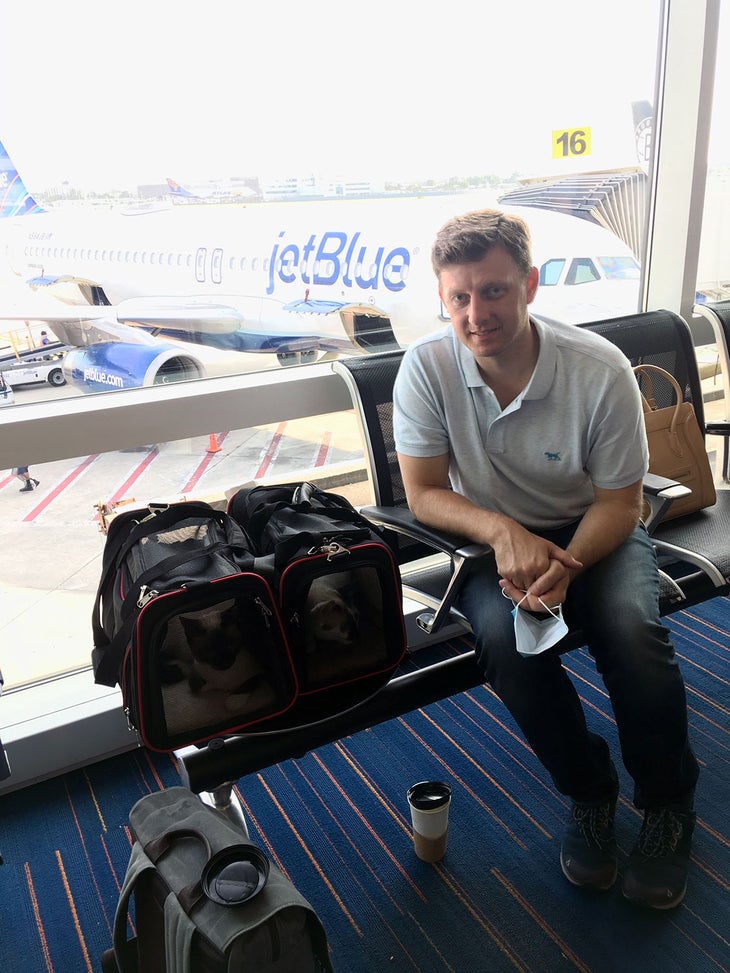
Over a decade ago, I decided to forgo that rigamarole. That’s why I now travel almost exclusively with carry-on luggage, so I can cruise through airports like George Clooney in Up In the Air—efficient, deliberate, and with no time for yokels struggling to find their laptop and liquids in the security line. It’s easier than you think it is to forgo checked bags, even if you’re headed off on a far-flung adventure. I’ve gone on a weeklong fishing trip in New Zealand, met buddies to float Colorado’s Gunnison Gorge, and flew to Iceland to celebrate a friend’s 50th birthday party, which required me to pack a suit and tie for a disco-themed fête and rain gear for hiking in the highlands—all with just a carry-on suitcase and a small backpack. Checking bags, unless you absolutely need to, is for amateurs.
�����ԹϺ��� travel, of course, is a much different beast than Clooney’s pink-slipping weekday missions. While the specifics of a two-day business trip may be different than a 10-day tour of Peru, the principles remain the same: pack light, know which carry-on rules can be massaged, and stick with a luggage setup and packing strategy that will work in 90 percent of scenarios. Here’s a primer on how to solve the carry-on conundrum, gleaned from two decades of my own travel headaches, in addition to my favorite carry-on luggage.
If you buy through our links, we may earn an affiliate commission. This supports our mission to get more people active and outside. Learn more.
The Downlow on Carry-On Luggage Rules
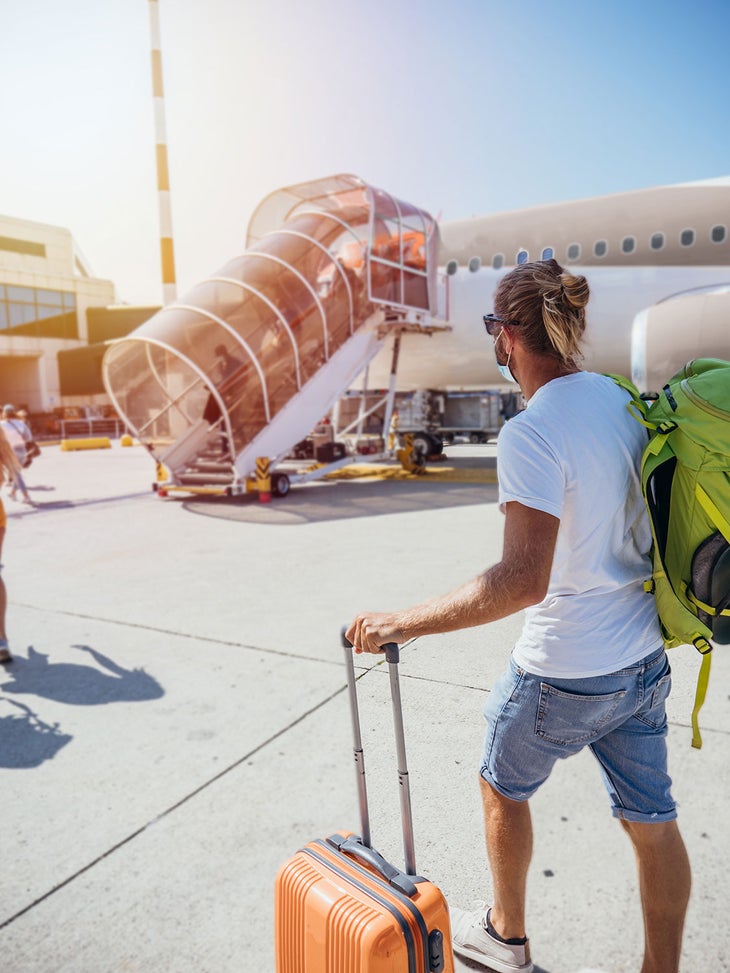
Airline regulations for carry-on luggage sizing are often as abstruse as their algorithms for pricing flights. Each carrier is unique in its guidelines, and there are different limits—both weight and size—for domestic and international flights. To help you navigate this red tape, here are a few things to be aware of.
Know the Official Size Restrictions
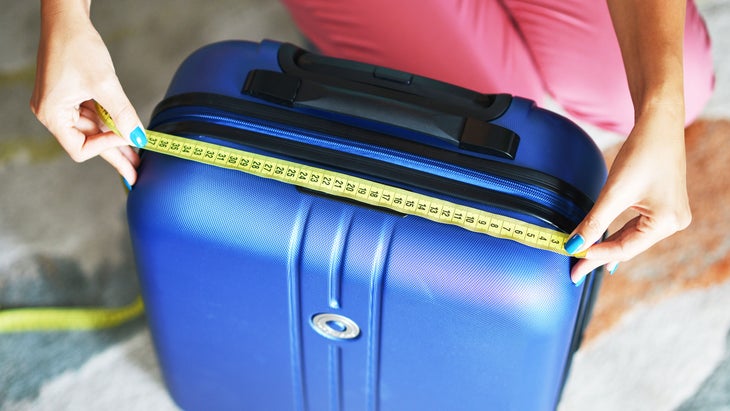
The maximum size carry-on luggage for domestic flights is, generally, 22 x 14 x 9 inches (or a combined length, width, and height that does not exceed 45 linear inches). Most domestic flights have a weight limit of 35 pounds, although many don’t even list that specific number on their sites and instead simply say something to the effect that you need to “arrive knowing that you can easily lift your bag into an overhead bin.”
For international carriers, the standard carry-on luggage size is usually slightly smaller than that of U.S. airlines, and carry-on weight allowances can be all over the place, with different limits for various classes of cabin. For example, has a 7kg (15.4 pounds) weight restriction for Economy Class and 10kg (22 pounds) for Premium Economy. (Both classes have a size limit of 21.6 x 14.9 x 8.6 inches.) For , you can board with a bag weighing a whopping 23kg (51 pounds), with a maximum size restriction of 22 x 18 x 10 inches. In short, if you’re traveling on an international airline and have doubts, look up its allowances online before you go.
Official Domestic Airline Carry-on Luggage Size Limits:
- : 22 x 14 x 9 inches
- : 22 x 14 x 9 inches
- : 22 x 14 x 9 inches
- : 24 x 16 x 10 inches
- : 22 x 14 x 9 inches
Official International Airline Carry-on Luggage Size Limits:
- : 21.6 x 14.9 x 8.6 inches (55 x 38 x 22 cm)
- : 21.6 x 15.7 x 9 inches (55 x 40 x 23 cm)
- : 15.7 x 7.8 x 9.8 inches (40 x 20 x 25 cm)
- : 22 x 18 x 10 inches (56 x 45 x 25 cm)
- : 21.7 x 13.8 x 9.8 inches (55 x 38 x 22 cm)
Understand the Unofficial Rules of Carry-Ons

For anyone who flies regularly, you know that the specific size restrictions outlined above are about as solid as an empty duffel bag. You can usually get away with a much larger item than one clocking in at a strict 45 linear inches. TSA agents are generally indifferent to baggage size—and they definitely won’t check to see if yours is compatible with specific airline regulations. It’s only once boarding begins that you find out whether the airline will allow the bags you’ve got. This is where the maximum size rules can be bent (although this is not an official endorsement or recommendation you try that). Here’s how:
➡️ Assume You Can Get Away with a Slightly Larger Bag: In general, if it fits in the overhead space and you don’t need a pulley system to lift it into place, you’re probably good to go. The caveat here is that if it looks heavy and bulky, a flight attendant is likely going to call you out on it before you even try. An oversized duffel packed with ski gear? It’s a dead giveaway and you may be forced to check it. A giant backpack that would satisfy the needs of a thru-hiker on the Appalachian Trail? Chances are you’ll be forced to check it, too.
But if you’re wheeling on a hardshell suitcase, even with a front pocket stuffed with rain gear that makes it much bigger than the maximum size restriction, few flight attendants will bat an eye—assuming you can get it to fit in the overhead space easily enough.
➡️ Your Choice of Carry-On Matters: “Benefit of the doubt” is why I like to travel with roller suitcases. The companies designing these bags, like Away, Rimowa, and Tumi, are intimately familiar with airline restrictions and how bags best fit in the overhead space. Wheeling one of these on the airplane already assumes—in the flight attendants’ eyes, at least—that it will fit in the overhead space. If it doesn’t, a flight attendant will usually gate check the bag for free, which means you can pick it up in the jet bridge or on the tarmac when you deplane. (Although sometimes they make you check it through to your destination, and you’re stuck waiting at baggage claim.)
In a nutshell, it’s usually best to opt for a standard issue roller bag or a small duffel as your main carry-on. If you need to travel with a larger duffel or backpack, make it appear smaller than it is by using the built-in compression straps to shrink it down as much as possible, then tuck in any loose straps. It won’t always work, but sometimes they’ll feel bad enough for you and let you store it overhead.
➡️ Hedge Your Packing Strategy: If you are bringing on a carry-on that you know is larger than the official size limits, make sure not to pack anything in it that you don’t want to get tossed around if you’re forced to check it. For example, don’t pack your laptop, medications, or anything of value in it. If they ask you to check it as you’re boarding the plane, you should be prepared to hand over the suitcase at a moment’s notice and let everyone else continue boarding (I beg of you).
Personal Items: What You Should Know
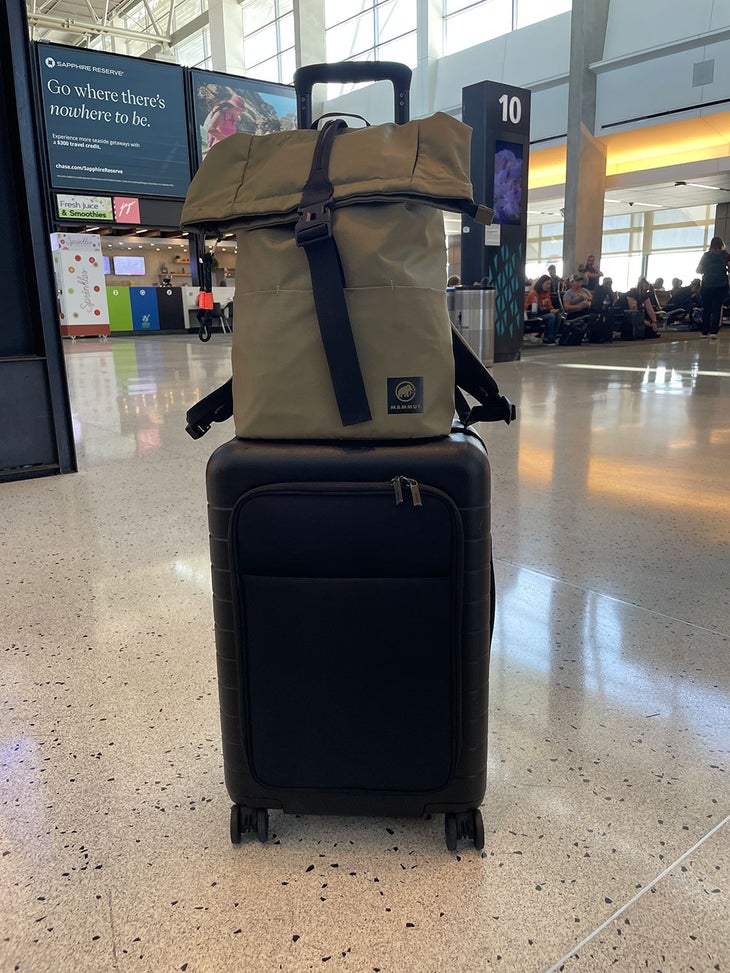
Many airlines don’t specify exact size restrictions for personal items, but the that all carry-on luggage fits under the seat in front of you if it’s not in an enclosed storage compartment. In my experience, flight attendants are fundamentalists about abiding by this rule, so there’s no point in trying to hide a 75-liter backpack under the seat. You’ll get asked to move it—and likely check it.
That said, most flight attendants don’t police the size of personal items as you’re boarding the plane, so all you need to do is make sure you can cram it under the seat when you sit down. This is why a medium-sized backpack works well: paired with a suitcase or duffel bag, you can stuff it full of an impressive amount of clothes and gear and still get it to fit under the seat.
Also, when boarding the plane, the attendants will focus primarily on evaluating your larger bag and overlook your personal item, so you can often get away with a larger second carry-on—again, as long as you’re able to stow it properly under the seat.
Outdoor Gear and the TSA
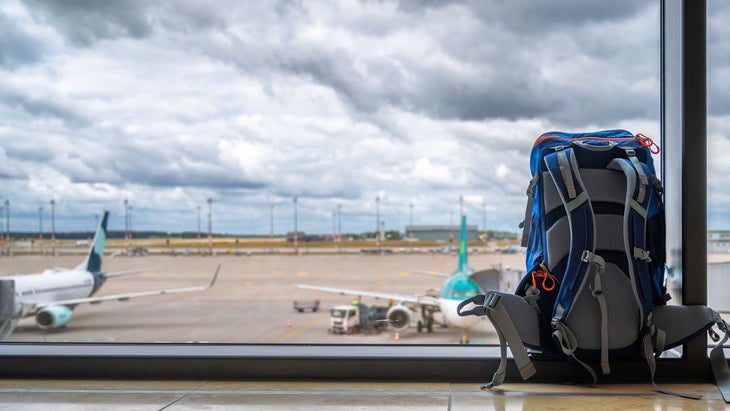
While TSA does not, generally, police policies on the size of your carry-on, they do care (very much, in fact) about the items in your bag—particularly camping equipment like pocket-knives, fuel canisters, lighters, and other banned items. In fact, it has an entire section on its website devoted to . Bear spray? No way. Bicycle pumps? Yes. Camp stoves? Only if they’re clean of residual fuel. (Fuel canisters are a hard no.)
Be sure to check the list linked to above if you plan to bring any sporting gear to verify specific rules regarding that item. For example, sunscreen is one product that many people forget. It’s considered a liquid so, if it’s over three ounces, you’ll have to toss it in the trash to get through TSA purgatory.
Also, double check every gear bag you’re carrying on to make sure there’s no errant banned item (especially in the pockets). Twice I’ve brought my fishing pack along and had an agent pull me aside to confiscate a folding knife that I had forgotten I’d stashed.
The Best Carry-On Luggage: Duffels, Packs, Suitcases, and More
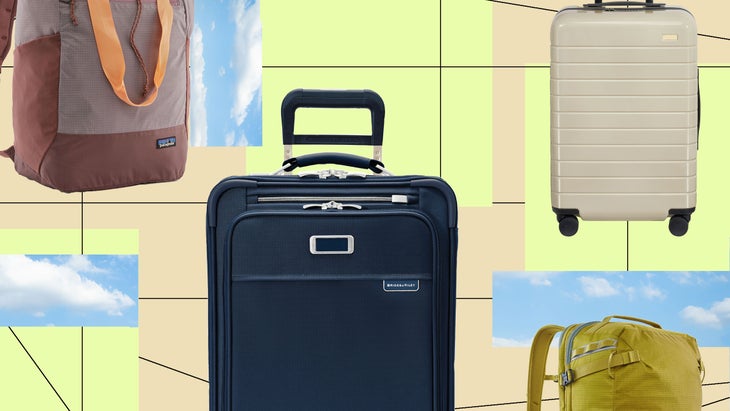
Sorting out what to pack for each trip should be easy: don’t bring anything you won’t absolutely need. I generally abide by the rule of three: skip the third pair of shoes, the third sweater, the third pair of pants, etc. Pick clothes that you know you’ll wear more than once. Also, wear the heaviest clothes and large hiking shoes onto the plane and carry on your coat (it doesn’t count as an item).
When it comes time to pack, you should already know whether you’re bringing a roller, duffel bag, or backpack as your main carry-on, thanks to whatever specific adventure you have in store (like a backcountry raft trip or train trip through Europe). If not, simply opt for the default: a wheeled suitcase and a small or medium-sized backpack or tote. You can’t go wrong with any of the options listed below.
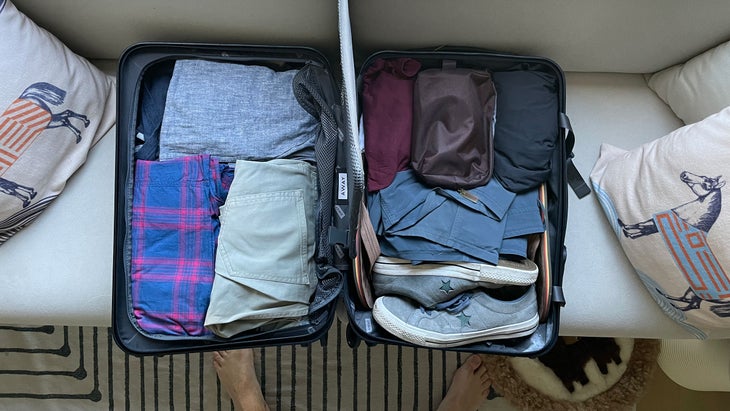
Carry-On Suitcases
Wheeled suitcases are designed for jaunts to and through the airport, and they excel at this—which is why they should be your go-to choice for most types of travel, even the adventurous kind.
In addition to being perfect for airport cruising, they can also usually withstand the abuse they take on the ground. I’ve had my Away suitcase strapped to the side of a snowmobile to reach a backcountry hut in British Columbia and thrown into the rear of a floatplane shuttle to a remote river in Labrador. While they may be less ideal than duffles in some scenarios—like my aforementioned examples—because they’re so adept at helping you cruise through terminals or navigate city sidewalks, dealing with the awkwardness of roller bags off the pavement is worth it. In short, everyone should have a roller suitcase as their default travel bag. When selecting one, just make sure that the company has a warranty—lifetime preferable—that covers normal wear and tear.
Best All-Around Suitcase: Away The Bigger Carry-On Classic
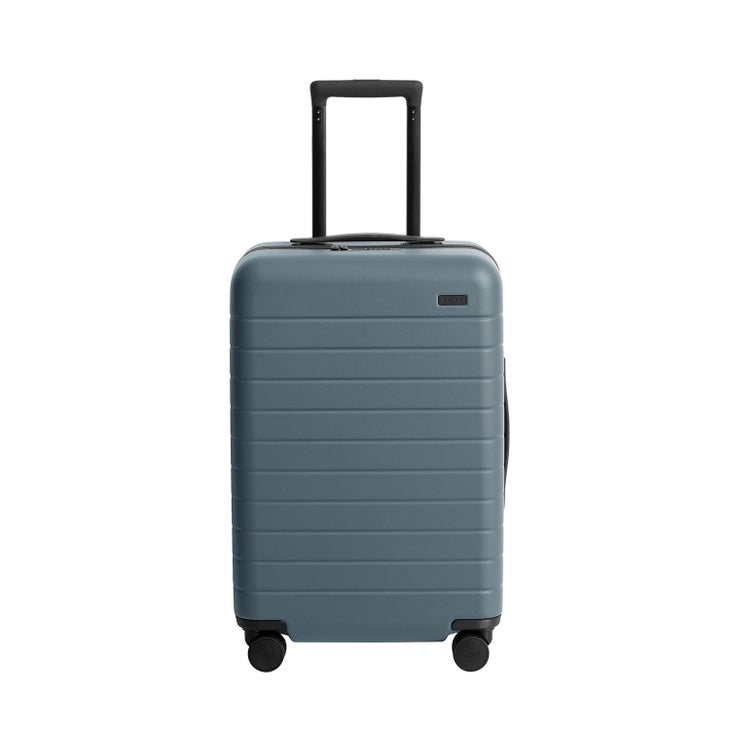
🧳 Dimensions: 22.7 x 15.4 x 9.6 inches
💰 Cost: $295
Most hard-sided suitcases are extremely similar in design and durability these days. Away rises to the top because it hits the sweet spot between functionality, durability, and cost. It’s a mid-priced workhorse, with an interior mesh organization system that compresses clothes on one side, with a storage compartment for bulkier items, like shoes, on the other. Its 360-degree wheels are sturdy and smooth, and an exterior polycarbonate shell absorbs bumps and collisions with ease. I’ve used the same one for the last ten years and it’s held up remarkably well, considering all the abuse I’ve put it through. I suspect it’ll work well for whatever you toss its way, too.
Best Soft-Sided Suitcase: Briggs and Riley Essential 22″ Carry-On Expandable Spinner

🧳 Dimensions: 22 x 14 x 9 x 11.5 inches
💰 Cost: $699
Soft-sided suitcases usually stand up to dings and scratches much better than hard-sided options, and this one from Briggs and Riley is as durable as anything on the market, made with ballistic nylon fabric and outfitted with impact-resistant corner guards that actually work. It’s also capable of a neat packing trick: it can expand to fit all your gear and then, once it’s zipped shut, compresses via pushing down on each side, where a latching system locks the sides in place. There’s a large front pocket for easy access to items like a jacket or sweater and it comes with Briggs and Riley’s best-in-class lifetime guarantee, which makes the steep price more than worth the cost.
Carry-On Duffel Bags
Best Overall: The North Face Base Camp Voyager Duffel 42L

🧳 Dimensions: 23” x 14.7” x 10.2” inches
💰 Cost: $135
Any person who camps, hikes, climbs, fishes, runs, or does anything else outdoors can attest: a nearly bombproof duffel bag like this one from The North Face is a lifesaver for organizing gear. It works equally well for traveling, with an adjustable interior divider to help with organization, padded shoulder straps that can be stowed behind the back panel, and even a laptop compartment. Made from ballistic nylon and polyester tarpaulin, it’s designed for the long haul and solid backcountry beat-ups.
Best Wheeled Duffel: Patagonia Black Hole Matte Wheeled Duffel 40L
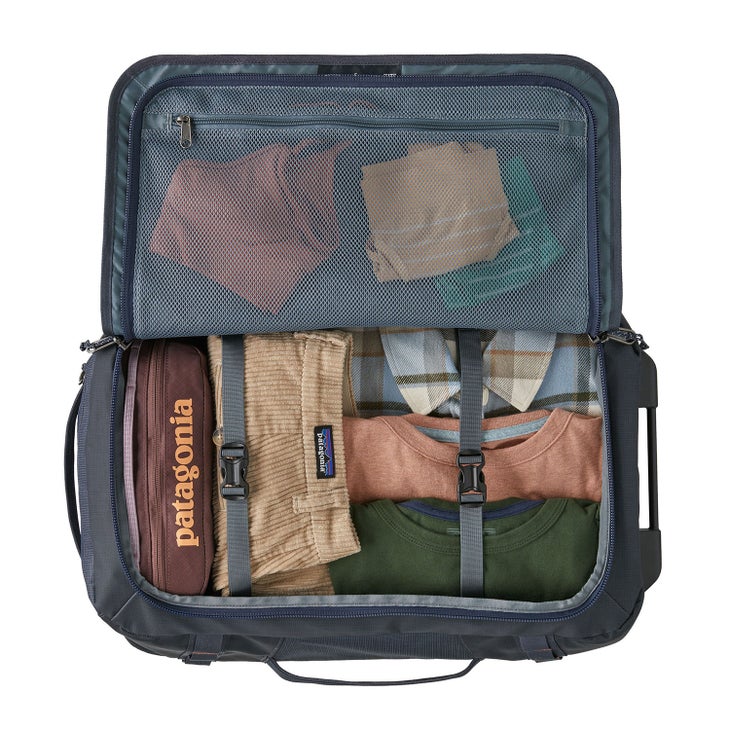
🧳 Dimensions: 21.75 x 14.5 x 11 inches
💰 Cost: $359
This 2,400-cubic-inch bag—the two-wheeled version of Patagonia’s iconic Black Hole duffel, below—is perfect for plane travel when you have Type 2 fun planned for your final destination and need to pull it more than 90 percent of the time. It offers the same burly performance as the original duffel, with polyester ripstop fabric and reinforced handles. But this one also has oversized wheels for getting around the terminal and, say, the cobbled streets of colonial Quito.
Carry-On Backpacks
Not all backpacks will fit under the seat in front of you, so when buying one, be sure to consider how you want to use it: as a carry-on meant to be stowed overhead or as a personal item for stashing in front of your feet.
Best Overall: Yeti Crossroads 22L
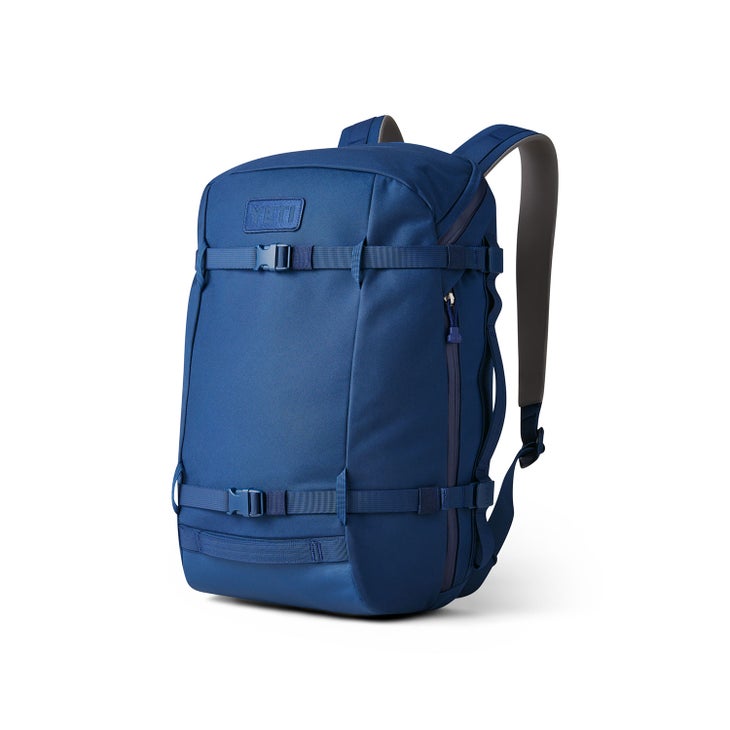
🧳 Dimensions: 18.5 x 12 x 7.1 inches
💰 Cost: $200
With 22 liters of space, this pack is perfect for stashing impressive amounts of clothes and gear while still fitting under the seat in front of you. There’s an inside sleeve for a laptop; a zippered compartment up top for easy access to sunglasses, keys, and a passport; and a luggage pass-through panel allows you to affix it to the handle of your roller suitcase while cruising through airports. And because it’s made from Yeti’s proprietary Tuffskin nylon, it can withstand being tossed around once you arrive at your destination. I can back this up from firsthand experience hiking with it in a rainstorm in Iceland and after lashing it to the back of a motorcycle in Morocco for a tour through the desert. This same pack is available in 27 liter and 35 liter versions, if you want to opt for the larger size and use it as your primary carry-on bag.
Best Laptop Backpack: Cotopaxi Allpa Mini 20L Travel Pack
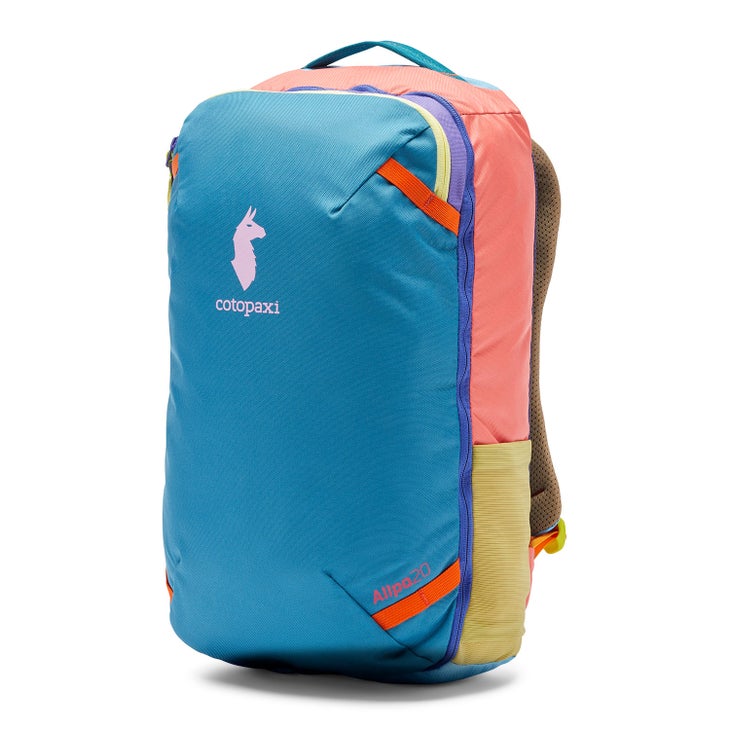
🧳 Dimensions: 17 x 10 x 8 inches
💰 Cost: $140
Sometimes all you need is a pack that can haul your laptop through the airport and then help you lug around a camera or a water bottle when you’re at your destination. With a sleek design that weighs just 18 ounces, this pack is perfect for those types of trips, where versatility is key and you’re on the go most days. It has an internal sleeve to secure a tablet or small laptop, a water bottle pocket, and two large internal main pockets for organizing other gear.
Best Big Backpack: Patagonia Black Hole MLC 45L
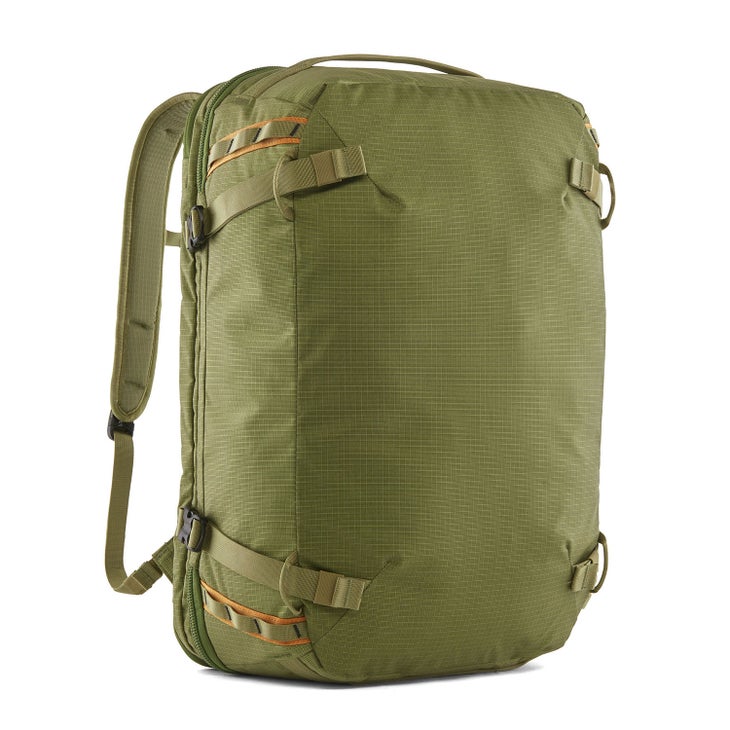
🧳 Dimensions: 22″ x 14.5″ x 7.6″ inches
💰 Cost: $239
If you’re forgoing a suitcase or a duffle bag and want to use a backpack to travel with all of your clothes and gear, this is the pack that’ll get the job done. With 2,746 cubic inches of space, it’s big enough to store enough gear for a long weekend—or even weeklong—trip, yet it’s compact enough to fit in the overhead space of most planes. There’s a padded laptop pocket and a large interior space with two other pockets for organization and it can be carried as a backpack, shoulder bag, or duffel.
Miscellaneous Travel and Packing Gear: Compression Bags and Totes
When traveling, not only do you need to get from point A to B, you also need to live out of your carry-on for the trip. This means staying organized on the road, and to help you do that, I recommend a packing cube (or two) and a tote. Having them on hand makes everything easier. I rarely go anywhere without them.
Best Compression Bag: Eagle Creek Pack-It Isolate Compression Cube
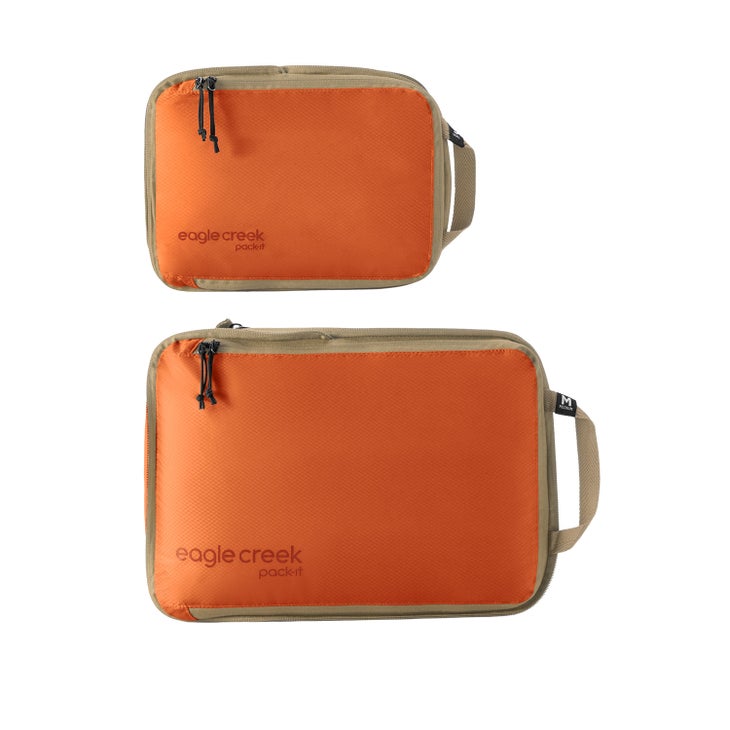
🧳 Dimensions: Comes in multiple sizes
💰 Cost: $50 for a set of two
Compression bags are the secret between fitting what you need and having to leave essentials—like that sweater for foul weather, or a pair of flip flops for beach day—behind. Eagle Creek offers some of the best compression sacks on the market: Its Pack-It Isolate Compression Cube shrinks gear inside via a burly zipper that, as you close it, pulls the bag and its contents together.
Packable Tote Bag: Patagonia Ultralight Black Hole Tote Pack

🧳 Dimensions: 15.5 x 10.25 x 8 inches
💰 Cost: $99
One of the quirks I’ve developed over years of traveling is carrying this extremely lightweight (just 13 ounces) bag on pretty much every trip. It packs into its own pocket and, unfurled, you can carry it as a backpack or a tote. On the road, it has served as a perfect pack for grabbing groceries while walking the streets of Paris or bringing a bathing suit and a towel to a backcountry hot spring in New Mexico. (Usually, though, I simply use it as a laundry bag for dirty clothes.) When it comes time to pack for home, you also have an extra bag to carry on any souvenirs or other purchases you’ve made along the way. I usually check my main suitcase (it doesn’t matter if it gets delayed on the way home) and carry on the most important things in a backpack and this tote bag.

Ryan Krogh is a freelance writer and editor based in Austin, Texas. In the last decade, he’s traveled to 27 countries and every U.S. state, nearly all with just a carry-on suitcase. This included his two-week honeymoon to Morocco and Paris, France, in 2022.**Not including his wife’s suitcases and the shipments home from the souks in Marrakech.


